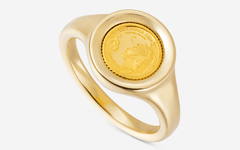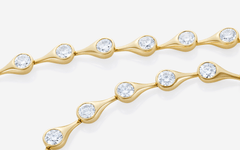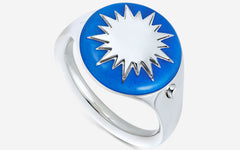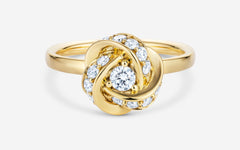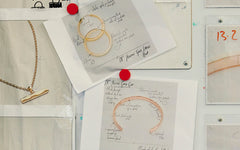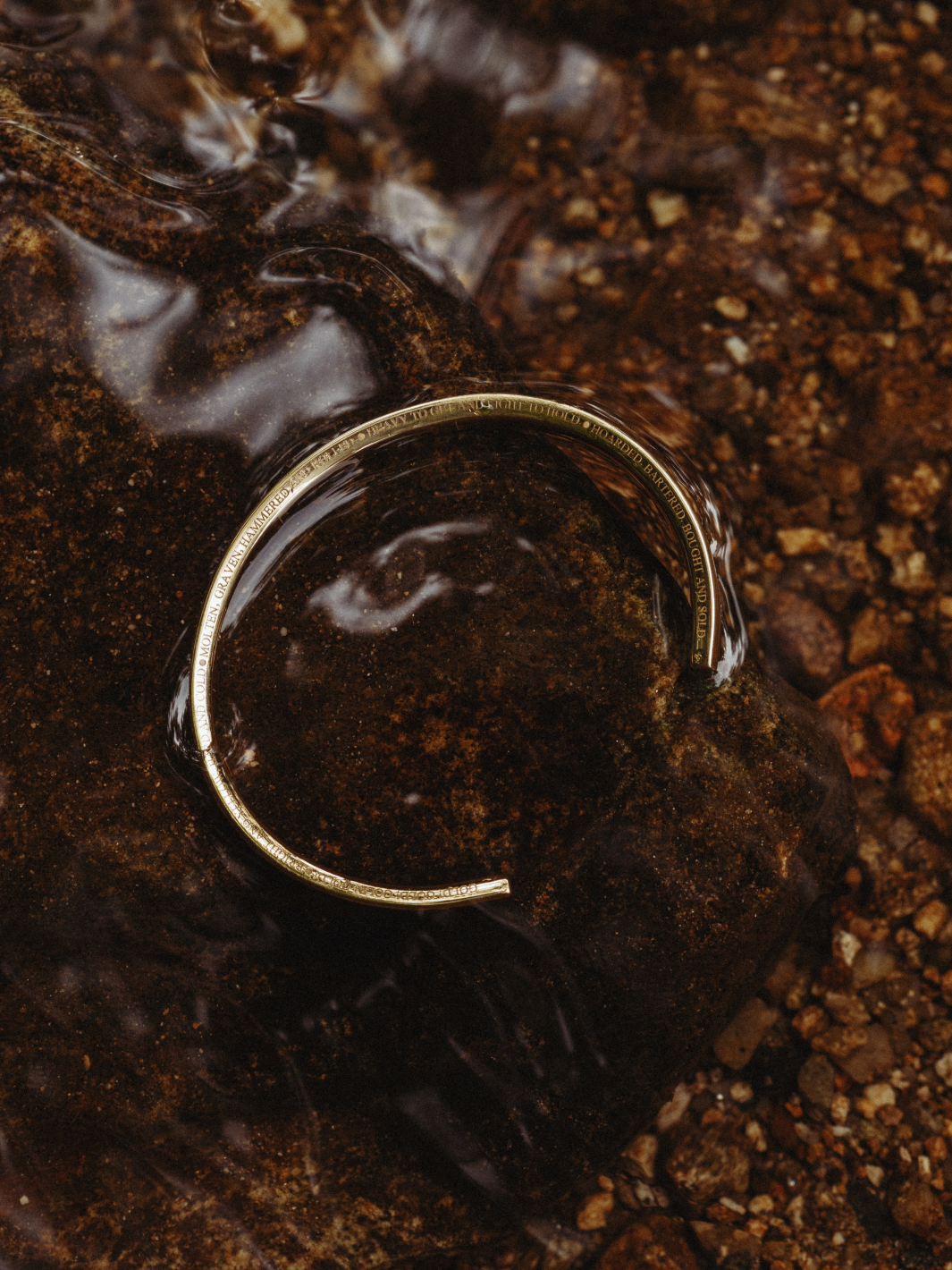The Latin inscription ‘Decus et Tutamen’ appeared on the edge of some 17th century British gold and silver coins, and translates as ‘an ornament and a safeguard’, as a response to the widespread contemporary practice of clipping coins.
“For the ‘Tutamen’ collection, I wanted to celebrate a piece of design that most people overlook in their day-to-day lives, but which has a fascinating backstory. While exploring The Royal Mint’s archives, I discovered how a coin’s milled edge was used from the 1660’s to solve the problem of coin debasement through coin clipping.” explains Dominic Jones.

Originally, circulating coins were made from precious metals, and clipping was the act of shaving off a small portion of the edge of a precious metal coin for profit. Before milled edges were introduced, coins were a simple flat pancake disc with illustrations on either side, the value of which was determined by the amount of silver or gold they contained. This led to industrial scale high treason, whereby people were trimming the circle of the coins smaller and smaller and so reducing their intrinsic value. When merchants tried to trade abroad, the value of the coinage was inconsistent.

To prevent this loss in value, a milled or reeded edge was introduced from the 17th Century. This motif has been re-imagined by Creative Director Dominic Jones in the 886 by Royal Mint Tutamen collection as a nod to our coin-making heritage.
“The Latin inscription ‘Decus et Tutamen’ translates as ‘an ornament and a safeguard’ and this fitted with what I wanted to portray in the jewellery for The Royal Mint - the idea of it being decorative but also holding value, a safeguard of investment.” Dominic Jones.
